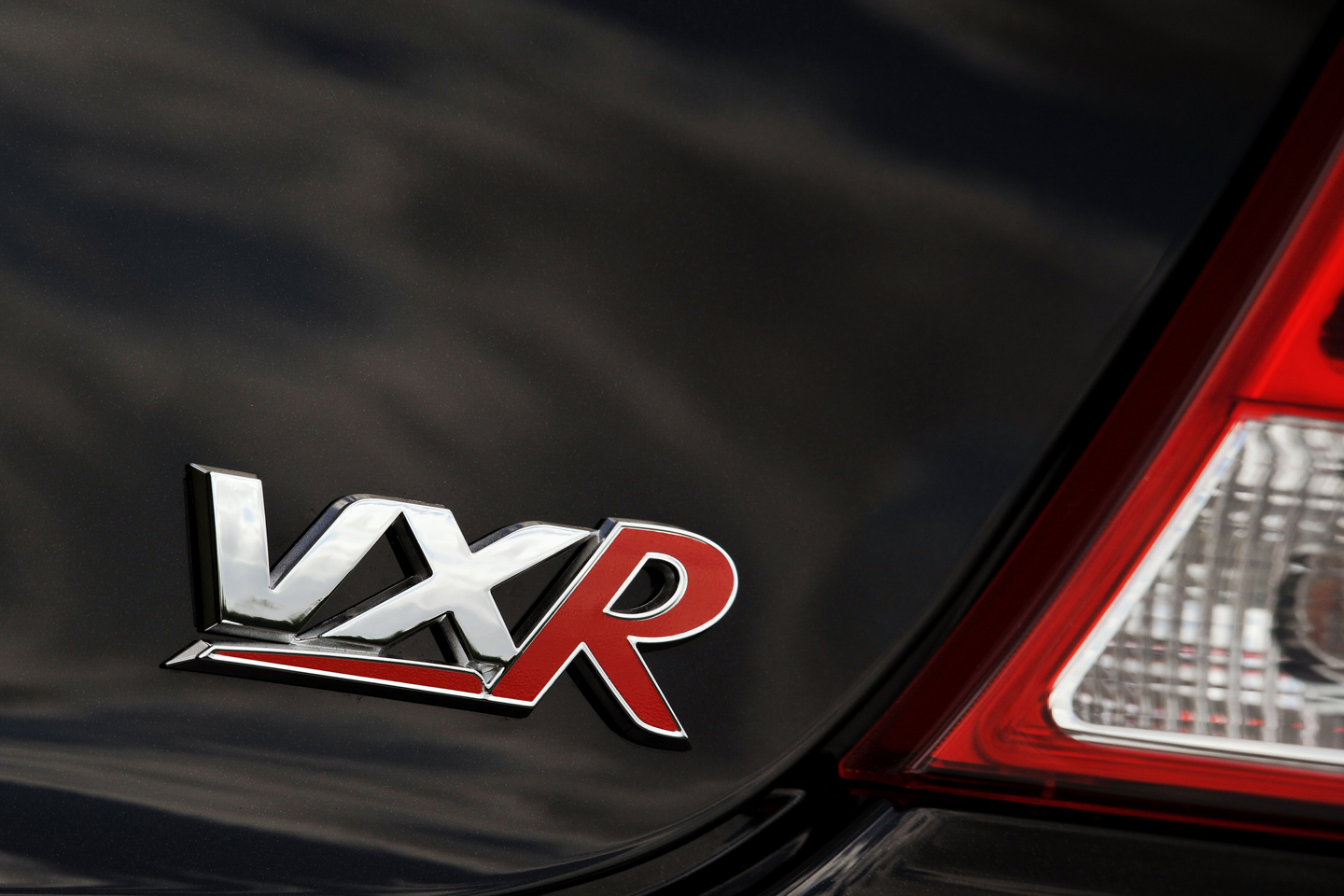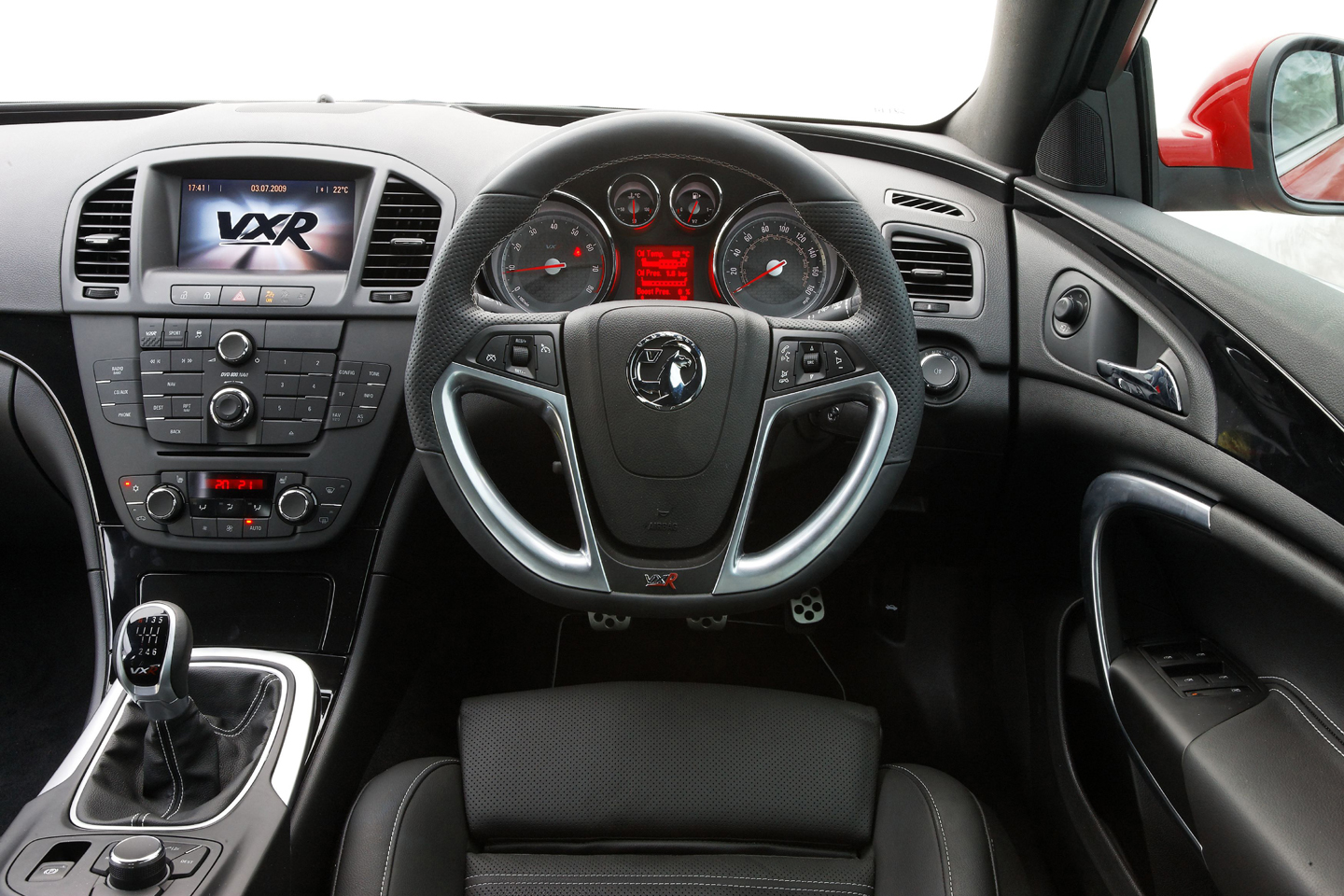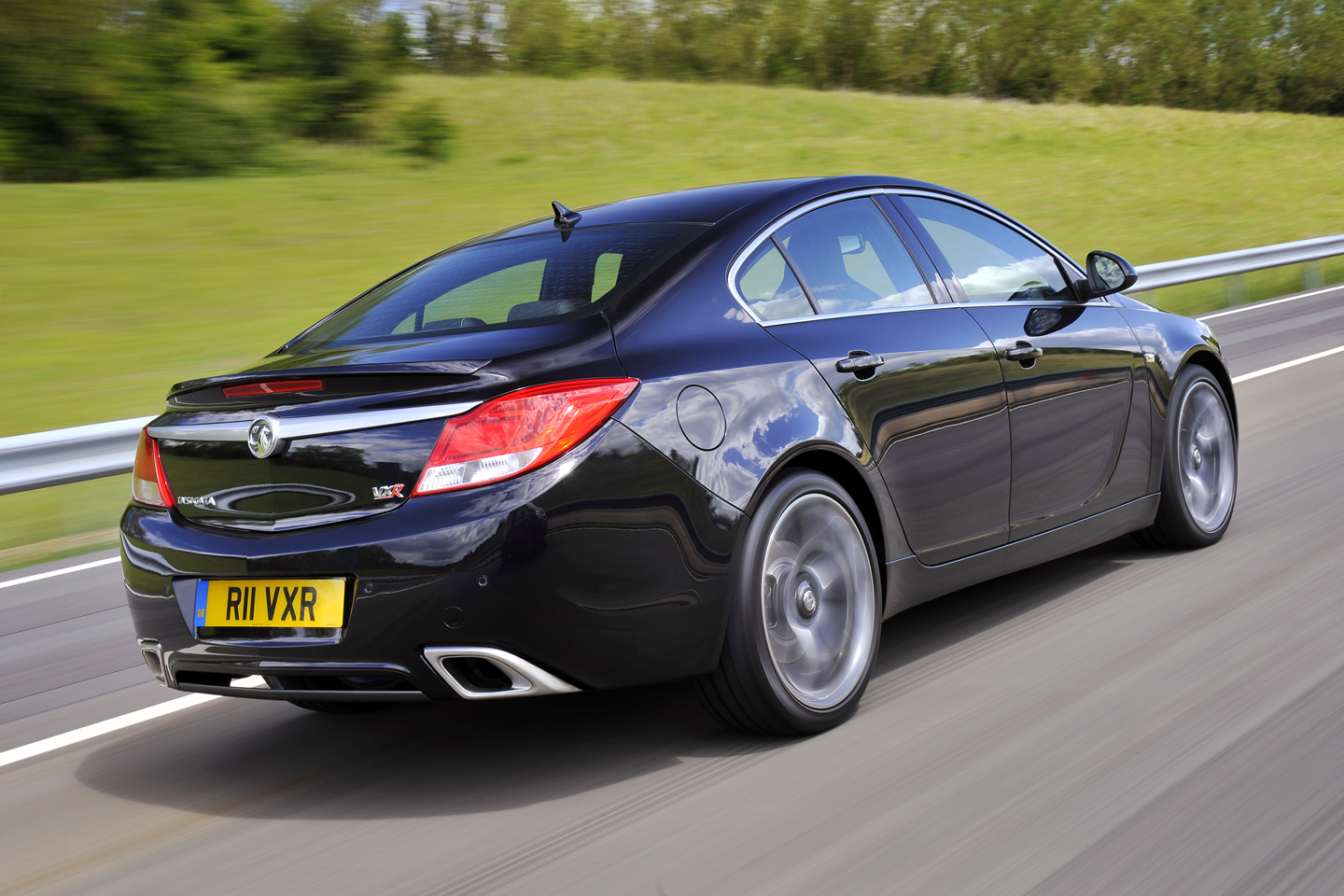
Key considerations
- Available for £8,000
- 2.8-litre V6 petrol turbo, all-wheel drive
- Not a ‘classic VXR’ but all the better for that
- Smooth, fast, secure, thirsty
- Strong mechanicals make 400hp a viable goal
- Check paperwork for evidence that important/expensive work has been done
Who’d be a Vauxhall brand manager? One minute you’re being slaughtered for producing boring cars like the Vectra and Corsa, the next you’re being slaughtered for your new VXR performance sub-brand which was basically not boring enough. That might be a simplistic take on it, and we certainly have no stats to back any of this up, but the tearaway ‘give it large’ VXR associations that formed on the sub-brand’s birth in 2003 may well have turned off as many people as it attracted. You expected to see the VXR badge on cars like the Astra and Corsa but the decision to glue it onto the Zafira and even the grannyish Meriva was a stretch.
Anyway, feel free to chat amongst yourselves about that. In the new-for-2009 Insignia Vauxhall had an opportunity to reboot the VXR brand under a new banner of still serious but more grown-up performance. The base Insignia looked right for the job. It was voted European Car of the Year. Yes, we know, winning COTY isn’t always a ringing endorsement of a car but perhaps you’ll be more impressed by the awards given to the Insignia by the German expert inspection institutes Dekra, who in 2011 found it to have the fewest flaws in its class, and TÜV who in 2012 made it their Nummer Eins for used car quality. So the Insignia did seem like a good starting point, but the VXR version that arrived in saloon, hatch or estate formats in ’09 still had a tough task convincing buyers that it was a viable alternative to the also newly-released B8 version of the Audi S4.
What was Vauxhall’s master plan? On the mechanical side, it was to ramp the 2.8-litre turbo Ecotec V6 up from 255hp to 321hp via more extreme cam profiling, a boosted-up turbo, larger injectors, reduced exhaust back pressure and a new map. The final drive was shortened from 3.76 to 3.90 to 1 to make the most of all that. Chassis-wise, the VXR rode 10mm lower than the sportiest Insignia to date, the SRi, on model-unique ‘HiPerStrut’ front suspension, Vauxhall’s equivalent of Ford’s RevoKnuckle. This was designed to maintain negative camber in fast corners and reduce torque steer. The thicknesses of the anti-roll bars relative to the SRi were reduced at the front and increased at the rear to create a new handling balance, and front/rear spring rates were hiked by 5 percent and 12.5 percent respectively.

Wrapping it all up into a safe driving package was an adaptive Haldex permanent all-wheel drive system – a VXR brand first – plus an electronic limited-slip differential on the rear axle and four-piston Brembo brakes. The Sports Tourer was the first Vauxhall estate to incorporate adaptive AWD and an electronic LSD. It was also Vauxhall’s fastest-ever estate. For the 2013 model year Vauxhall launched a facelifted ‘Supersport’ version of the Insignia VXR. It was basically the same car but with a revised front and back end, bigger ‘sabre tooth’ grille and the 155mph limiter removed (it was a spec option before) to unlock a new top speed of 170mph. The rear suspension came in for some tweaking too, as did the software for the adaptive suspension and the stability control. Refinement was said to have been improved as well.
More relevantly the new VXR had a new lower price of £29,749, which in 2012 was around £3,700 below the price of the outgoing non-Supersport VXR. Again this pricing decision was made with more than one eye on press headlines as it allowed Vauxhall to claim the title of the UK’s fastest sub-£30k car. The Insignia VXR ran on until 2017 and the Insignia range was closed down in early summer 2022, just two years after its final facelift, with production ceasing in autumn of that year. This was in line with the brand’s stated intention to go all-electric by 2024. Pictures of an electrified fastback successor were released in early 2023 but as of May ’23 it hadn’t been confirmed whether the Insignia name will be revived for it.
We’re not bothered about any of that. Here we’re looking at the 2009-13 Insignia VXR, a left-field sporting saloon/hatch/estate choice that you might well want to consider – especially when you hear that they’re available for as little as £8,000.
SPECIFICATION | VAUXHALL INSIGNIA (2009-13)
Engine: 2,792cc turbocharged V6 petrol 24v
Transmission: 6-speed manual, all-wheel drive
Power (hp): 320@5,250rpm
Torque (lb ft): 321@5,250rpm
0-62mph (secs): 5.8/6.1
Top speed (mph): 155 (limited)
Weight (kg): 1,810/1,940
MPG (official combined): 24.7/24.2
CO2 (g/km): 268/274
Wheels (in): 19 (20 optional)
Tyres: 245/40
On sale: 2009 – 2013
Price new: £30,995 (£32,320 estate)
Price now: from £8,000
Data given is for saloon & hatchback/Sports Tourer
Note for reference: car weight and power data is hard to pin down with absolute certainty. For consistency, we use the same source for all our guides. We hope the data we use is right more often than it’s wrong. Our advice is to treat it as relative rather than definitive.

ENGINE & GEARBOX
The V6 engine had a micro-alloy forged steel crank, a die-cast alloy oil sump and a single twin-scroll turbocharger running at up to 0.9 bar. Aided by the all-wheel drive system the smooth and linear turbo V6 was powerful enough to deliver headline-grabbing acceleration times and enough flexibility to make it a very handy motorway tool. It wasn’t a classic VXR experience though. As could often be the case with big V6s it never felt nerve-janglingly rapid, especially from lower speeds with torque limitation in place on the first two gears in the 6-speed manual box. Initially, that was the only Insignia VXR transmission. Baulky if hurried, its action was on the functional side of fun.
The gearing generally was on the long side and the delivery of maximum torque and power didn’t happen until a high 5,250rpm, obliging press-on drivers to hang on to intermediate ratios longer than they might have preferred. The official mid-to-high five-second 0-62mph time (low sixes in the Sports Tourer) told an authentic enough VXR story but in practice few road testers managed to replicate those numbers. The 7.1 seconds it took to cover the 50-75mph increment in fifth gear was more easily attained and would have felt like an alien concept to VXR fans accustomed to the normal neck-wringing driving technique.
It all went some way towards fulfilling Vauxhall’s desire to project a Germanic sense of serious but also refined performance, even if it didn’t have the Germanic fuel efficiency to go with it. According to the official figures the VXR averaged just over 24mpg compared to nearly 30mpg for Audi’s 329hp supercharged 3.0 TFSI S4. Figures beginning with a 1 were not difficult to achieve in an Insignia VXR. It did sound good through its 20 per cent lighter stainless steel Remus sports exhaust though.
In the spring of 2011, a six-speed torque converter automatic was added to the Insignia VXR proposition, adding around half a second to the 0-62mph time but also marginally reducing average fuel consumption to 26.7mpg. In Sports Tourer format the auto was priced at £36,230.

Insignias as a breed showed themselves to be vulnerable to electrical issues. The stop-start system has been known to stop and not start and dodgy EGR units could precipitate coolant leaks. Squeaking has been heard from fans and whining from some automatics. Stalling has been traced to faulty fuel filters.
Other than that the main engine is reliable and strong. Pre-2011 cars did have problems with their timing chains. Replacing them was expensive – at least £2.5k and potentially a lot more at a VXR dealership – because there were lots of chain, guides and other components involved, and the water pump needs to be changed at the same time. Fortunately, specialists will do it for well under £2k, but in isolation that’s still a lot of money. Illumination of the engine management light and poor running are your early warnings of a timing issue. It might be a solenoid but it is more likely to be chain stretch.
Insignia VXR clutches get fed up with handling the power. When the plates wear down, the clutch starts to slip. If you don’t catch it in time hot spots will appear on the flywheel at which point that will need replacing too, raising your costs from £400 for the clutch on its own to £1,000+ for the clutch and flywheel. You’re much better off going for aftermarket replacements from an independent specialist rather than using OE Vauxhall parts. Exhaust hangers commonly fail, causing rattling, but these and other less major items won’t be ruinously expensive to put right. Servicing at respected specialist Thorney Motorsport will be £375 for a full and £275 for an interim.
If you want to juice up your VXR you could do a lot worse than start with a Courtenay Sport remap which will take it to 365hp and 434lb ft – a big torque hike – for £595. A custom exhaust, performance filter, bigger intercooler and remap will get you near to the 400hp mark.

CHASSIS
As long as you weren’t expecting Elise-standard responses – and why should you in a five-seater – it was pretty good news on the VXR chassis front. The HiPerStrut suspension had been exhaustively tested at the Nürburgring with a 10,000km, 487-lap sign-off session. Coupled with the AWD it gave the Insignia road purchase under power that the Vectra VXR never had.
None of the adaptive FlexRide system’s three settings came anywhere near to soft but they all provided a good blend of comfort and stability, with road irregularities well smothered at speed. The standard setting was fine for normal use, Sport brought extra body control and VXR cranked up the firmness while adding extra directness to the steering and throttle. In truth, the steering feel wasn’t great in any mode. From a driving perspective, it was the car’s weakest link. There was no power oversteer to be had but the handling was pleasantly neutral with excellent stability right up to the 155mph limit.
The AWD system provided 90 per cent of drive to the front wheels as a default but that became 60/40 front/rear when you activated VXR mode. If the back end of your early-model VXR started skipping, juddering or grinding while driving slowly on full lock on a grippy surface, that was generally indicative of a Haldex failure. Again the EML will come on telling you to service the AWD system but changing the oil, filter or the whole oil pump is usually a waste of time. It’s usually the Haldex internals that have worn. The owner community thinks that some had incorrect seals, leading to internal fluid contamination, and that some pumps were not up to the job.

Again, specialists have developed upgraded/rebuilt Haldexes. These reputedly have a much longer shelf life than the OE units and cost much less than the near-£5,000 that Vauxhall will ask you for theirs. Thorney Motorsport’s Haldex rebuild/upgrade costs £2,900 exchange if you send your unit to them, or £3,200 if you leave your car with them. There is no official check schedule for the Haldex but two years should be regarded as the maximum interval.
Brake disc size was increased for the VXR and stopping power was very good but the discs and pads didn’t last very long, fading fast on the track and wearing out quickly on the open roads. Police cars were going through these brakes not in years or months but weeks. Upgrading to an AP setup saved you money.
Not many Insignia VXRs will have been used for trackdays, a good thing if you’re buying. Still, some owners have reported having to scrap their front tyres after only 10,000 miles. Elsewhere, 20-inch forged alloy wheels were a £1,100 option, and rust affected the rear subframe area on some ‘08 and ’09 Insignias but that shouldn’t apply to the late ’09 onwards VXRs.

BODYWORK
Vauxhall resisted the temptation to festoon the Insignia VXR with Bathurst-style aero parts. Instead, they achieved a new-age VXR look by cutting away big chunks of the deep front-end bodywork. Offering sober body colours like black and white as alternatives to the usual VXR selection of noisy primaries opened the car up to a wider and more mature audience, although some owners were disappointed by the ease with which scratches could be accumulated. Anyway, the image of sporty solidity was reflected in reality by good Euro NCAP safety ratings – five stars for adults and four for children. Well, they are smaller, aren’t they?
The saloon had a workable 500 litres of boot space, the hatch providing 530 litres with the potential for a lot more (1,465) when the back seats were folded down. Obviously, the Sports Tourer was the most commodious. Even with the back seats up it offered 540 litres, increasing to 1,530 litres with them down. Both of these figures beat the S4 Avant.
Bi-xenon headlights turned with the steering but sometimes the door mirrors didn’t turn back to their default position after they’d been dipped for parking.

INTERIOR
Despite the angled roof on the saloon and hatch models, legroom and headroom were good in both of the non-estate VXR Insignias, even if the fifth bod in the middle of the rear bench had a raw deal in regards to seat squishiness and also from being forced into a knees-up position by the transmission tunnel.
Excellent half-leather Recaro seats up front could put you a useful 15mm lower in the car than regular Insignia seats. Apart from those and the slightly garish, slightly too large flattened-off steering wheel, VXR gearknob (which was nicer to use than the Astra VXR’s) and red-glowing instruments when in VXR mode, there wasn’t much in the front of a VXR to distinguish it from a normal Insignia.
The button-fest on the central dash and minor controls made even mundane actions such as audio adjustment needlessly fiddly, and there was no great sensation of ‘premium’ even though the materials were better than average quality-wise. ‘Nav’ models were £800 more expensive and came with a slow-zooming navigation system as well as the normal VXR complement of climate, cruise, Bluetooth, USB, and the IntelliLink infotainment system which occasionally turned itself off. The full Leather Pack with 8-way seats and power/fold mirrors cost £1,300.
The Insignia was the first production car to use a front camera for traffic sign recognition. Parcel shelves could develop annoying rattles and the tyres were never silent but overall it was a quiet and smooth car capable of many a mile.

PH VERDICT
James May called the Insignia the first de-chavved VXR. It might not have exuded the same air of superiority as an Audi S4 or BMW 340i but the model had plenty of presence. The VXR was a lot cheaper than either of them (£5k cheaper than the Audi in 2011) and better equipped to boot. You might not feel inspired on the first day but it was one of those cars that grew on you. It could easily handle more power. A reputable remap will give you all that you need in that department and create the car that it should have been in the first place.
In one back-handed way the VXR beats its German rivals, and it’s a good way if you’re a used buyer, and that’s in its speedy rate of depreciation. In today’s market (May 2023) you can easily pick up a moderately-mileaged (75-85,000) example for just £8,000. Just make sure you examine the paperwork on any car you’re thinking of buying. A service history is one thing but it’s the detail that’s important. What you really need to find is evidence to show that most if not all of the expensive failure items like the cam chain, brakes, clutch/flywheel and Haldex have been sorted by the previous mug (sorry, owner). Then you’ll have yourself a handsome and fast car for not very much money, especially in Sports Tourer guise. Yes, it won’t be that cheap to fuel, but if it was the prices would be a lot higher.
The most affordable VXR on PH Classifieds as of May ’23 was this 73,000-mile 2011 hatch. Considering the mileage it scrubs up well for £8,500 but as noted a minute ago you’ll need to scrutinise the documentation. Pay £1,500 more and you’ll be chipping more than 20,000 miles off the clock with this ’11 Nav hatch in red; £500 on top of that gets you into Supersport facelift territory with this full-leather 2014 car at £10,490. It comes with 89,000 miles but also a full service history and a new clutch. At the other extreme, and near the top of the price range on PH Classifieds, there’s this low-miles (21k) saloon at £14,950. It’s an early car so you’ll want to know its cam chain status and ideally some more info on the Haldex service.
